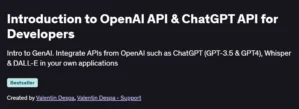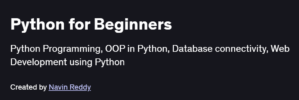What will you learn in Concurrency in Go Course
Understand the core principles of concurrency in Go (Golang)
Learn how goroutines and channels enable concurrent programming
Master synchronization tools like mutexes, wait groups, and select statements
Handle shared data and race conditions safely in concurrent applications
Build real-world concurrent Go programs from scratch
Prepare for backend and system design interviews with concurrency expertise
Program Overview
Module 1: Introduction to Concurrency in Go
⏳ 0.5 week
Topics: Concurrency vs parallelism, Go’s concurrency model, goroutines
Hands-on: Launch multiple goroutines to perform concurrent tasks
Module 2: Channels & Communication
⏳ 0.5 week
Topics: Channel creation, sending/receiving data, channel directions
Hands-on: Build a simple producer-consumer pipeline using channels
Module 3: Buffered Channels & Select
⏳ 0.5 week
Topics: Buffered vs unbuffered channels, select statement usage
Hands-on: Use
selectto manage multiple concurrent operations
Module 4: Synchronization Techniques
⏳ 0.5 week
Topics: WaitGroups, Mutex, deadlocks, race conditions
Hands-on: Create synchronized workers using WaitGroup and Mutex
Module 5: Channel Patterns & Pipelines
⏳ 1 week
Topics: Fan-in, fan-out, cancellation patterns, context package
Hands-on: Build concurrent data pipelines with graceful cancellation
Module 6: Real-World Use Cases & Best Practices
⏳ 0.5 week
Topics: Error handling in goroutines, timeouts, benchmarking
Hands-on: Develop a concurrent file downloader or task processor
Get certificate
Job Outlook
Go is widely adopted in backend, cloud, DevOps, and distributed system roles
Concurrency skills are essential for performance-critical and scalable systems
High demand for Go developers in companies like Google, Uber, and Docker
Roles include Backend Engineer, Cloud Developer, and Systems Programmer
Specification: Concurrency in Go Course
|
FAQs
- Teaches efficient use of goroutines and channels for concurrent processing.
- Covers synchronization tools like Mutexes and WaitGroups.
- Guides on designing scalable, low-latency systems.
- Offers hands-on projects simulating real-world backend workloads.
- Prepares learners to optimize CPU and memory usage in Go applications.
- Explains race conditions and how they occur in concurrent programs.
- Teaches safe handling of shared data using Mutexes and channels.
- Provides practical exercises to detect and fix concurrency bugs.
- Covers best practices for writing thread-safe Go code.
- Encourages testing concurrent programs to ensure reliability.
- Designed for learners with basic Go knowledge, not complete novices.
- Focuses on concurrency concepts rather than introductory syntax.
- Offers clear examples but assumes familiarity with functions, loops, and structs.
- Provides hands-on exercises to strengthen concurrency skills.
- Encourages using Go playgrounds or IDEs for practice.
- Teaches core concurrency patterns used in real interviews.
- Covers synchronization, channels, and goroutines, frequently asked in Go interviews.
- Provides hands-on examples for common interview problems.
- Helps understand performance implications in concurrent systems.
- Builds confidence to discuss concurrency in system design interviews.
- Explains fan-in, fan-out, and cancellation patterns.
- Teaches building concurrent pipelines for processing tasks.
- Guides on implementing worker pools for scalable systems.
- Covers context package usage for graceful task management.
- Offers hands-on projects like concurrent file downloaders or task processors.





